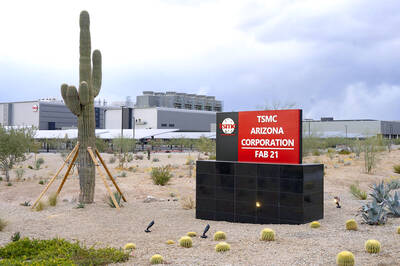Since the crew of Apollo 17 returned from the moon in December 1972, no human has left low-Earth orbit. Five space shuttles, scores of Russian Soyuz capsules, the International Space Station, and more than 450 men and women have left the Earth since Apollo, but all have been bound to a small shell of space just outside our atmosphere.
Any hope of an ambitious successor to Apollo might have been abandoned altogether if it wasn’t for former US president George W. Bush. In 2003, he announced plans for NASA to return to the moon by 2020 and then travel on to Mars by 2030. Once again, though, the US faces some serious competition. The same year that Bush tasked NASA with the 21st-century moon shot, Yang Liwei (楊利偉) became China’s first astronaut and, explicit or not, another space race had begun.
“The attitude to the space program in China is a little bit like the attitude towards space exploration in the Western world in the 1960s,” says Kevin Fong, an expert in space medicine at University College London. “There’s a deep fervor among their university kids for space technology. The main difference between China and America now is that China can just do something — they don’t need to ask permission or go through a democratic process and get the budget approved.”
This means that China can progress its space program quickly; if it wants to land on the moon — and many observers think it does — the country could do it well ahead of 2020, the earliest possible date for an American return.
China’s only confirmed plans so far include launching another robotic orbiter to the moon, probably followed by a robot lander and perhaps a lunar rover. Beyond that, we might not know whether China wants to put a person on the moon until it does it. Its successes are broadcast all over the world, but its failures remain internal. That hasn’t stopped serious people taking it seriously, though: last year the former NASA administrator, Mike Griffin, said he believed China had the capability to get to the moon and he wouldn’t be surprised if the next person to walk on the moon was Chinese.
“It’s all very dark out there and you’re not really sure how much they’re doing,” says Fong. “They seem very serious about it and have mature thoughts about it, from the little you see in their presentations. They still have much to learn from the existing space community and don’t want to be too overt about their ambitions at risk of looking like they’ve over-promised.”
The Indians are also hot on the heels of the US. India worked on an embryonic space program with the Soviet Union in the 1970s and flew its first cosmonaut in 1982. Today the budgets are relatively big — around US$800 million a year and a 10-year plan for human space flight that has committed funding of more than US$1.2 billion. It has already sent a robotic probe to the moon, but there is still plenty to prove in terms of human space flight — the country has indicated bold ambitions but has yet to confirm that it will send people into orbit, never mind all the way to the moon.
The Chinese and the Indians have many advantages over the Americans of the 1960s — for one thing, they are starting well ahead of Apollo in terms of technology. But it might not be technology that decides the winner. Aiming for space is about more than understanding flight paths and knowing the best rockets to use: moon shots are about taking risks. Fong points out that the Apollo program prioritized mission objectives over life or limb. No one was complacent about the danger, he says, but since most of the astronauts were former test pilots, they understood that things can — and would — go wrong. The modern NASA has inverted this priority — today the astronauts’ lives are absolutely more important than mission goals. This will have to change if NASA is to return to the moon and, particularly, if it wants to send people to Mars. And perhaps here China will have a clear advantage over the US.

Taiwanese chip-making giant Taiwan Semiconductor Manufacturing Co (TSMC) plans to invest a whopping US$100 billion in the US, after US President Donald Trump threatened to slap tariffs on overseas-made chips. TSMC is the world’s biggest maker of the critical technology that has become the lifeblood of the global economy. This week’s announcement takes the total amount TSMC has pledged to invest in the US to US$165 billion, which the company says is the “largest single foreign direct investment in US history.” It follows Trump’s accusations that Taiwan stole the US chip industry and his threats to impose tariffs of up to 100 percent

On a hillside overlooking Taichung are the remains of a village that never was. Half-formed houses abandoned by investors are slowly succumbing to the elements. Empty, save for the occasional explorer. Taiwan is full of these places. Factories, malls, hospitals, amusement parks, breweries, housing — all facing an unplanned but inevitable obsolescence. Urbex, short for urban exploration, is the practice of exploring and often photographing abandoned and derelict buildings. Many urban explorers choose not to disclose the locations of the sites, as a way of preserving the structures and preventing vandalism or looting. For artist and professor at NTNU and Taipei

March 10 to March 16 Although it failed to become popular, March of the Black Cats (烏貓進行曲) was the first Taiwanese record to have “pop song” printed on the label. Released in March 1929 under Eagle Records, a subsidiary of the Japanese-owned Columbia Records, the Hoklo (commonly known as Taiwanese) lyrics followed the traditional seven characters per verse of Taiwanese opera, but the instrumentation was Western, performed by Eagle’s in-house orchestra. The singer was entertainer Chiu-chan (秋蟾). In fact, a cover of a Xiamen folk song by Chiu-chan released around the same time, Plum Widow Missing Her Husband (雪梅思君), enjoyed more

Last week Elbridge Colby, US President Donald Trump’s nominee for under secretary of defense for policy, a key advisory position, said in his Senate confirmation hearing that Taiwan defense spending should be 10 percent of GDP “at least something in that ballpark, really focused on their defense.” He added: “So we need to properly incentivize them.” Much commentary focused on the 10 percent figure, and rightly so. Colby is not wrong in one respect — Taiwan does need to spend more. But the steady escalation in the proportion of GDP from 3 percent to 5 percent to 10 percent that advocates